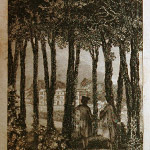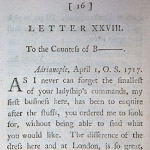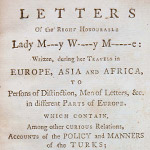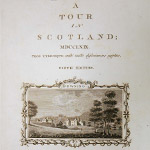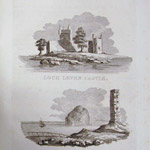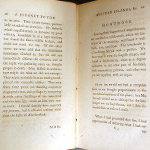 |
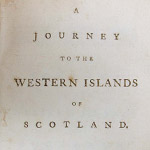 |
Dr Samuel Johnson's career in letters was extraordinary. He tackled satire, biography, essays, fiction, travel writing, political pamphlets, journalism, poetry (in Latin and English) - and that proclaimed drudgery - lexicography (see vitrine two). Perhaps Queen Anne's 'touch' to cure scrofula gave him the best start toward his greatness? He is the representative figure of his age, the eighteenth century. With James Boswell he explored Scotland in 1773. One result was A Journey to the Western Islands of Scotland, published in January 1775. Apart from some criticism from some Scots, it earned him the admiration of George III and 200 guineas. |



